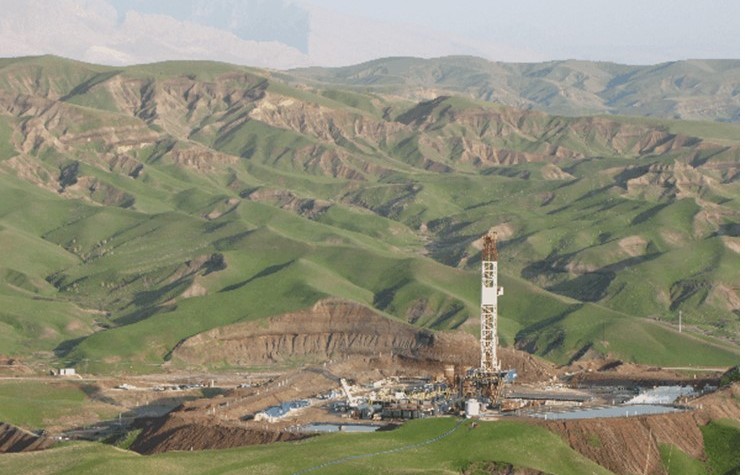Gulf Keystone Petroleum hits 40,000 bpd target at Shaikan

By Amy McLellan
A good start to the year for London-listed Gulf Keystone Petroleum, which begins 2015 having met its year-end production target of 40,000 barrels per day from its Shaikan field in the Kurdistan Region of Iraq.
This has been a long-held goal for the company and, given the turbulent geopolitical backdrop in the region, it was an important one to hit in order to reassure investors that it’s business as usual for the £575 million market cap company.
The giant Shaikan field, where there are 12.5 billion barrels of oil in place, produces from seven wells, with an eighth due online this month and another now drilling ahead. The 40,000 bpd milestone was reached on December 27 and two days later, the company loaded a record 354 trucks from its PF-1 and PF-2 facilities with nearly 58,000 barrels of Shaikan crude for trucking to the Turkish coast for export.
CEO John Gerstenlauer said the company was “proud” to have delivered a near 300 per cent increase in production and export sales from Shaikan despite the challenges in the region.
Importantly, the Bermuda-registered company is now getting paid for its export production. In early December the company announced it had received an initial US$15 million for its oil export sales.
Given the ongoing export dispute between Baghdad and Erbil, the capital of the Kurdistan Region of Iraq, concerns about payment have long been a headwind for the stock.
In November the Kurdistan Regional Government’s Ministry of Natural Resources, which is keen to exercise is constitutional rights to produce and market the natural resources under its control and to put clear blue water between how it operates compared to its counterparty in Baghdad’s Ministry of Oil, made an initial payment of US$75 million on account to producers for exports, with further payments to follow on a regular basis.
This was good news for Gulf Keystone and fellow producers in the region, such as Genel and DNO, which together have helped lift exports through the Kurdistan to Turkey pipeline to around 400,000 bpd, with plans to export 500,000 bpd by the end of Q1 2015 and 1 million bpd by early 2016. This production is vital to the KRG as it continues to battle Islamic State and handle a growing refugee crisis.
While Gulf Keystone’s initial US$15 million is a modest contribution to the monies it is currently owed for export sales, it does signal the willingness of the KRG to meet its obligations to the international oil producers. Analysts at Edison Investment Research said the payment was a “very welcome first step”, noting that they believe the company is owed US$35 million from its production over H1 2014 with “probably more” than US$50 million due in H2.
The company now wants to bed in its higher production rate and ensure a period of stability at this 40,000 bpd level. Next steps will be to ensure those payments are made regularly and to finalise a pipeline solution for exporting Shaikan crude in order to reduce trucking costs.
The elephant in the room, however, remains the oil price. Stable production of 40,000 bpd at an oil price of US$100 or more would have been transformational for the company; with oil now under US$60 a barrel and still falling, the revenue stream will be lower and more volatile, weighing on the company’s ability to fund its capex plans for the year ahead, which may include further development of Shaikan as well as starting work on the first phase of the Akri-Bijeel development.
Shares in the company have lost two thirds of their value over the past 12 months, a reflection of the troubles in the region and the wider lack of appetite for oil stocks, but have added 20 pence since the lows of October. On Monday the stock was trading at 64.5 pence per share.
Analysts at Northland Capital Partners said that were the company operating in another part of the world it would be a “ripe takeover target” but its “strong underlying fundamentals” remain “offset by the significant risk profile that continues to mean it is not one for the faint hearted”.
Comments (0)